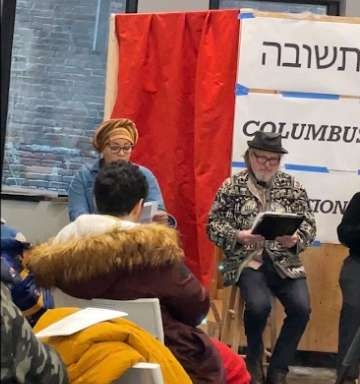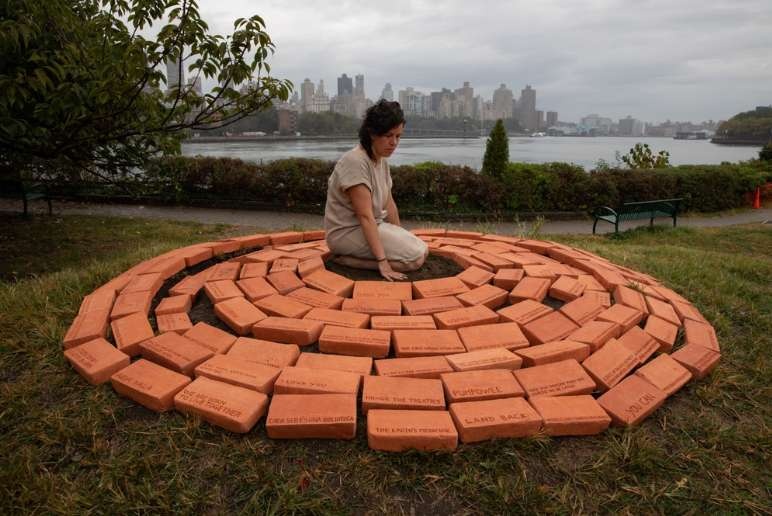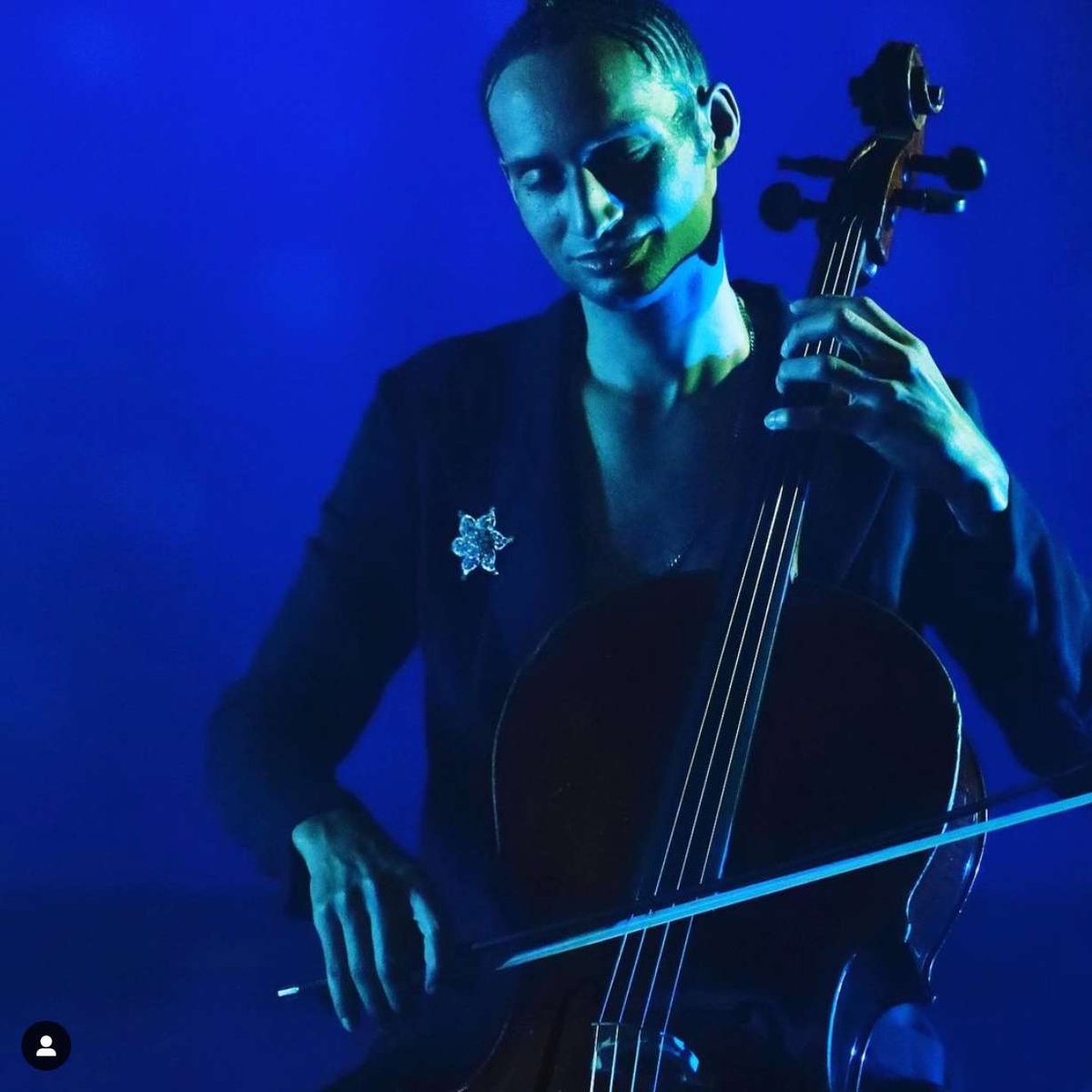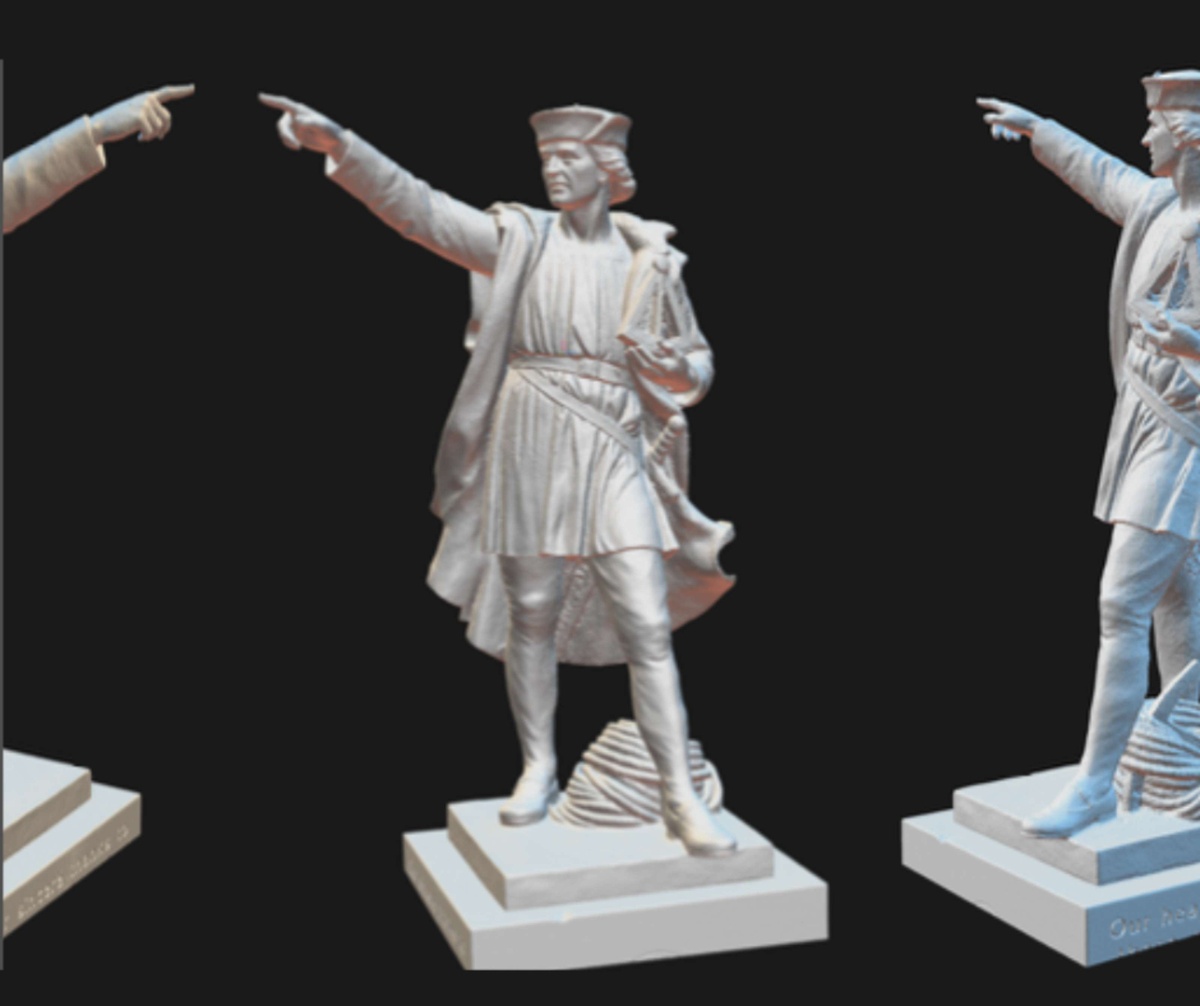

Due to the process-based nature of the Session program, this project will undergo constant modifications; the features of this page provide accruing information on the project’s developments.
Date:
November 17, 2022–January 14, 2023
Visitor info
To make an appointment, please sign up no later than 10 am the same day at recessartscheduling.as.me
Read our safety guideline
The question of what to do with monuments that have potentially outlived their ideological usefulness is easily answered by removing such public sculptures from our sight. Columbus Confessionals proposes that by recruiting such objects for their symbolic potential, we gain the possibility of confronting ideologies inconsistent with an equitable, tolerant and empathetic society.
As an artist, Superville Sovak employs cultures of remembrance to fill in the gaps inherent in the narratives of multi-racial identities that make up the DNA of this country (as well his own). By employing participatory activation for his projects, Superville Sovak seeks a form of discourse that illuminates the complexity of an audience. In past projects the artist has officiated participatory performances, which symbolically disavow the unmerited benefits of stolen land and labor (Burial for White Supremacy), marked the ties of one college campus’s famed architectural monument to the legacy of the slave economy (Stolen Sugar Makes the Sweetest Books), and engaged passersby in a storefront portrait studio/oral history recording sessions (I Draw & You Talk.) For his Recess Session, the artist has reimagined the space as a laboratory for exploring the redemptive potential of a life-size replica of a monument to Christopher Columbus that has recently been the center of public protest by local community members.
A replica of the Columbus monument will be housed in one side of a confessional booth where the sculpture will remain partially exposed to visitors who may enter the other chamber and engage in a private dialogue with the sculpture. Visitors are asked to explore their own connection to the various layers of meaning that have been ascribed to Columbus throughout American history. On an adjacent wall, large prints of Columbus’s outline invite viewers to write down their responses to the questions “What did Columbus say in the past?”, “What should Columbus say in the present?”, and “What might Columbus say in the future?” Transposed onto the monument, Columbus then serves as a vessel for projections of both our anger and hope. Columbus Confessionals, therefore, not only asks “Can a sculpture feel pain?” but also, “Can a sculpture feel our pain?”
Columbus Confessionals acknowledges the ideological purgatory into which the symbolic figure of Columbus has been cast. During the course of the Session, a selection of the respondents’ words will be compiled into a liturgy embodying a collective form of judgment, a cleansing fire otherwise understood as “un-forgetting”, through which our understanding of a seemingly impenetrable historical figure may allegorically “satisfy old debts, undergo correction, and heal painful memories” according to the Catholic tradition of Confession.
As the Session progresses, the artist will be compiling a topical reading list and a series of recorded interviews with artists and scholars on subjects as “The Politics of Memory” and “The History of Allegorical Representations of American Nationhood.” The artist will also be using a part of the Recess gallery as a fabrication studio, inviting the public to attend workshops to mold sections of the Columbus model (hands, face, chest) in order to cast objects that will be used in a ritualized performance culminating at the end of the Session.
Columbus Confessionals borrows the image of the patron Saint of American Nationhood as a wedge to leverage and fracture differences between history and nostalgia. The project invites the public to collectively peel back the layers of mythological identities embedded within dominant historical narratives of Nationhood, Independence, Citizenship, Patriotism and Righteous Rebellion.
Session invites artists to use Recess’s public platform to combine productive studio space with dynamic exhibition opportunities. Sessions remain open to the public from the first day of the artist’s project through the last, encouraging sustained dialogue between artists and audiences. Due to the process-based nature of Session, projects undergo constant revision and the above proposal is subject to change.
Ways to experience the project
CalendarNovember 18, 2002 at 5:00am
Event
46 Washington Ave. , Brooklyn, NY 11205
December 10, 2022 at 3:00am
Event
Online
December 17, 2022 at 1:00pm
Event
Recess , 46 Washington Ave. Brooklyn, NY 11205
January 14, 2023 at 3:00pm
Columbus Confessionals: Closing Reception & Performance
Event
Recess, 46 Washington Ave. Brooklyn, NY 11205
About the artist
Jean-Marc Superville Sovak
Artist
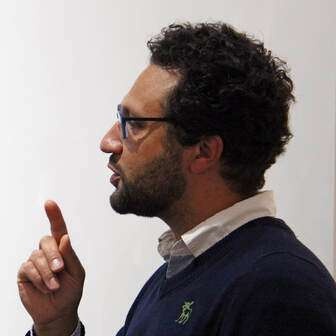

Jean-Marc Superville Sovak is a multidisciplinary artist and teaching professional whose work is deeply rooted in the histories and communities around him. His public works include organizing and officiating a Burial for White Supremacy (Unison Arts Center, New Paltz, NY), retracing speculative steps on the Underground Railroad across historic sites in the Hudson Valley (Wilderstein Historic Site, Rhinebeck, NY), designing memorials to Afro-Dutch pioneers in colonial New Netherlands (Rockland County Art in Public Places), and I Draw & You Talk, a storefront portrait-drawing studio doubling as an oral history project (Matteawan Gallery, Beacon, NY.) His current practice, a-Historical Landscapes, involves altering 19th-century landscape engravings to include images borrowed from contemporaneous Anti-Slavery publications.
As Visiting Artist and Lecturer, Jean-Marc has used his work as a platform to discuss topics such as “The American Picturesque in the Age of Abolitionism” at colleges, universities and cultural institutions such as the Loeb Arts Center at Vassar College, the Samuel Dorsky Museum at SUNY New Paltz, Bard College Experimental Humanities Collaborative Network (EHCN), Berrie Arts Center at Ramapo College of New Jersey, and Olana State Historic Site. Jean-Marc’s art has been exhibited at the Aldrich Contemporary Art Museum, Socrates Sculpture Park, Shirley Fiterman Art Center, Arts Westchester, Kingston Sculpture Biennial, Manifesta 8 European Biennial, Fridman Gallery, Transmitter Gallery, and the International Studio and Curatorial Program in New York. A graduate of Bard College’s M.F.A. Program in Film/Video, Jean-Marc’s video work has been screened worldwide and is distributed by Videographe, Inc. Jean-Marc’s practice also includes guest curating “We Wear the Mask: Race and Representation at the Samuel Dorsky Museum of Art.” Jean-Marc has been the recipient of a NYFA Strategic Opportunity Stipend and the Alice and Horace Chandler Purchase Award and his works in the permanent collections of the Loeb Art Center and the Samuel Dorsky Museum of Art.
Explore/Archive
See allOpens May 14, 2026
Bel Falleiros
A project that calls us, in this moment of social and environmental collapse, to make space to be with nature.
Opens March 22, 2026
Zeelie Brown
The artist will compose and premiere a new sonata exploring the links between music, ecology, and spatial justice
Opens January 14, 2026
A circle of creative exchanges between Assembly youths and 3 incarcerated participants from Parole Prep’s Archive-Based Creative Arts program






